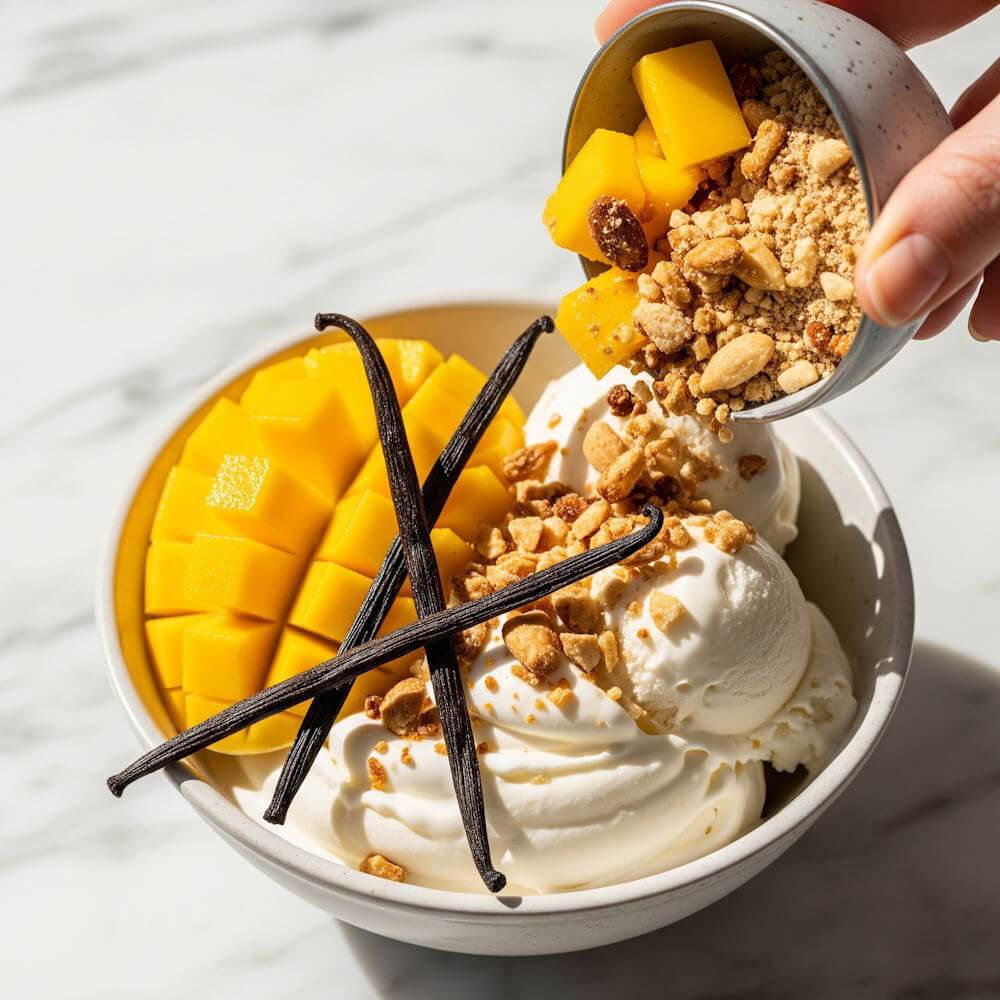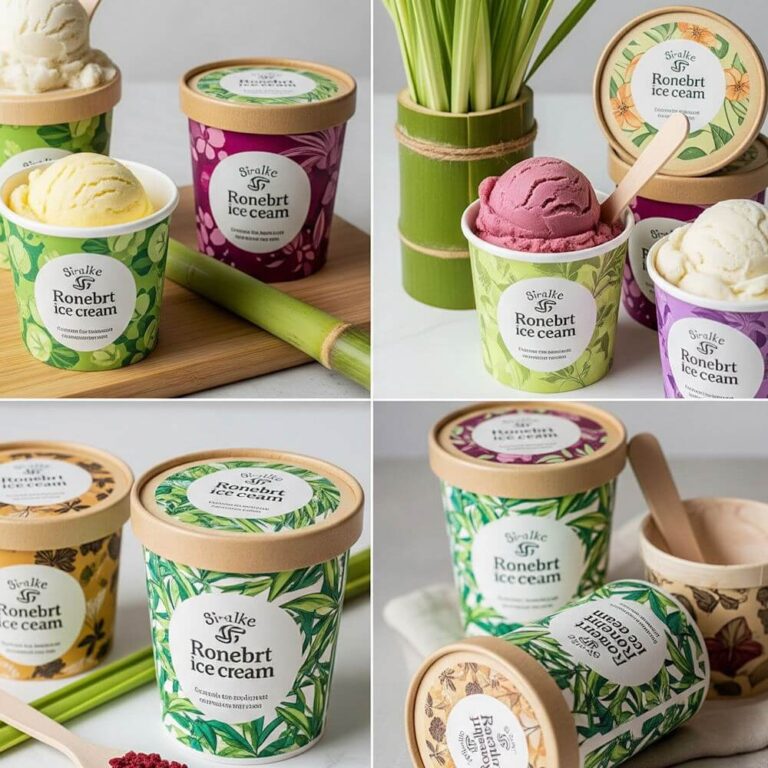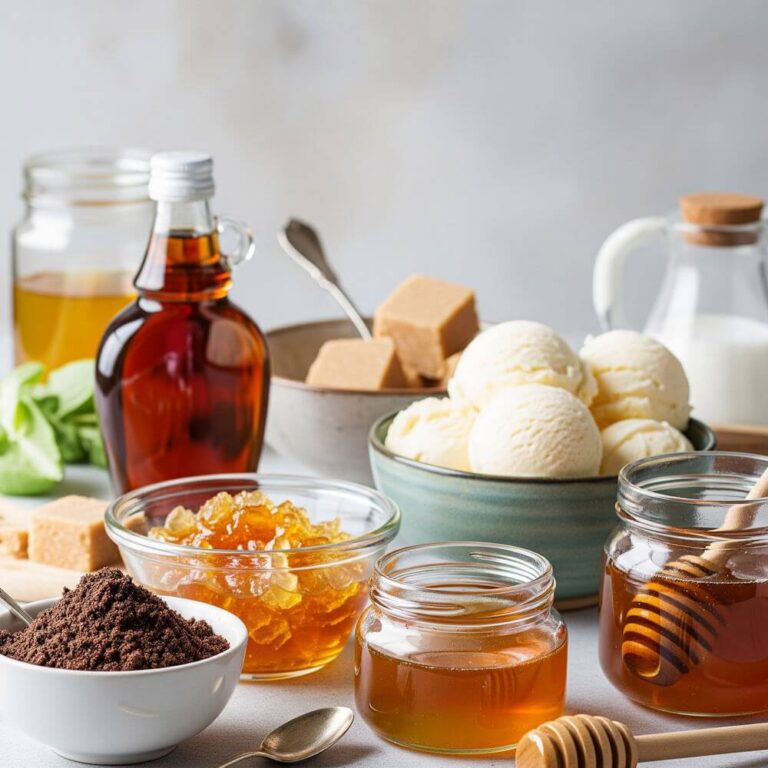Ice cream, a delightful frozen dessert, boasts a rich history and has evolved significantly over the centuries. Its journey begins in ancient civilizations, where early forms of frozen treats were created using snow, ice, and various natural ingredients such as fruits or honey. Historical records indicate that the Chinese were among the first to invent a rudimentary version of ice cream, making it with milk and rice, chilled in snow, around 200 BC. Similarly, the Romans and Greeks utilized snow from the mountains to create similar concoctions. This early experimentation laid the groundwork for what would become one of the world’s most beloved desserts.
As time progressed, particularly in the 17th century, ice cream began to gain popularity in Europe. The introduction of sugar and improved freezing methods allowed for a greater variety of flavors and textures. The development of ice houses enabled the preservation of ice throughout the warmer months, making ice cream more accessible to a broader audience. In the 18th century, advancements in dairy processing techniques further contributed to the creamy consistency that we associate with modern ice cream.
The 20th century signaled a pivotal shift in the production and consumption of ice cream. The invention of the ice cream maker and the widespread availability of refrigeration transformed it into a staple in households across the globe. Today, ice cream is celebrated not only for its delightful taste but also for its comforting qualities, cultural significance, and versatility. With countless flavors and styles, including sorbettos, gelato, and frozen yogurt, ice cream continues to appeal to diverse palates. Its inclusivity in celebrations, holidays, and personal moments cements its reputation as an enduring symbol of joy, making it an essential part of cultures worldwide.
The Rise of Natural Ingredients in the Ice Cream Industry
In recent years, the ice cream industry has witnessed a significant shift towards the incorporation of natural ingredients into production recipes. This trend can largely be attributed to the growing consumer demand for healthier options and a more transparent food system. Modern consumers are increasingly aware of the impact of their food choices on health and well-being, driving a preference for clean labels and wholesome ingredients. This heightened food consciousness is prompting ice cream manufacturers to reconsider traditional formulations, favoring natural flavors, colors, and sweeteners over artificial alternatives.
The surge in popularity of natural ingredients is reflected in market statistics. Research indicates that the market share of ice creams made with all-natural ingredients has seen substantial growth in recent years. For instance, a recent survey revealed that nearly 60% of consumers actively seek out ice cream options that list natural ingredients prominently on their labels. This demand is particularly evident among younger demographics, including millennials and Gen Z, who prioritize sustainability and healthfulness in their purchasing decisions.
Moreover, the rise of social media and health-related information sharing has educated consumers about the negative effects of artificial additives and preservatives, reinforcing the preference for quality ingredients. Brands that respond to these consumer insights by developing products that showcase natural ingredients often find success. This is evident in the increasing number of artisanal ice cream shops that emphasize handmade techniques and locally sourced components. Consequently, the industry is not only evolving to meet changing consumer preferences but also embracing a more holistic approach to product development.
As the trend towards natural ingredients continues to gain traction, it is clear that the ice cream industry is undergoing a paradigm shift. Manufacturers who prioritize transparency and health by utilizing natural components are likely to thrive in this new landscape, paving the way for future innovations in frozen desserts.
What Are Natural Ingredients?
Natural ingredients refer to substances derived from nature that undergo minimal processing. They are fundamentally different from artificial additives and preservatives, which are synthetically produced and often provide less nutritional value. The distinction between natural and artificial ingredients is essential, particularly in food products like ice cream, where flavor, texture, and health benefits are paramount.
Common examples of natural ingredients that are frequently used in ice cream include real fruit, organic milk, and natural sweeteners. Real fruit serves not only as a flavor enhancer but also as a source of vitamins and minerals, contributing to a healthier product overall. Varieties such as strawberries, blueberries, and mangoes can provide authentic flavors that are often lacking in their artificial counterparts.
Organic milk is another vital natural ingredient. Sourced from cows not treated with growth hormones or antibiotics, organic milk offers a richer and creamier texture that enhances the overall eating experience. Furthermore, organic dairy farming practices are typically more sustainable, supporting animal welfare and eco-friendly practices.
Natural sweeteners, such as honey, maple syrup, or agave nectar, are also used in premium ice creams as healthier alternatives to refined sugars. These sweeteners are not only lower on the glycemic index, thus impacting blood sugar levels less dramatically, but they also introduce unique flavors that can elevate ice cream profiles beyond traditional tastes.
In summary, prioritizing natural ingredients in ice cream not only significantly improves taste and quality but also provides consumers with health benefits compared to products containing artificial additives. The sourcing of these ingredients is crucial, as it impacts the quality, flavor, and overall experience of enjoying ice cream.
The Flavor Profile: How Natural Ingredients Enhance Taste
Ice cream, a beloved comfort food, is often enjoyed for its delightful textures and diverse flavors. When it comes to taste, the quality of the ingredients plays a pivotal role, with natural ingredients standing out for their ability to create a more vibrant and appealing flavor profile. Unlike their artificial counterparts, which can sometimes impart a one-dimensional taste, natural flavors offer a depth and complexity that enhances the overall sensory experience of the ice cream.
Natural ingredients, such as real fruits, nuts, and spices, contribute to a richer and more nuanced flavor. For instance, utilizing fresh strawberries instead of artificial strawberry flavoring allows for the genuine sweetness and tartness that one expects from a ripe berry. This not only improves the taste but also provides an authentic connection to the fruit itself, making the ice cream experience more enjoyable and memorable. Similarly, ingredients like roasted hazelnuts or genuine vanilla beans add a multifaceted flavor that artificial enhancements simply cannot replicate.
Moreover, the incorporation of various spices can elevate the taste of ice cream significantly. For example, a touch of cinnamon or nutmeg can transform vanilla ice cream into a comforting experience, reminiscent of cherished family recipes. These natural spices add warmth and richness that artificial flavors lack, thereby appealing to consumers’ desires for authenticity and quality. The sensory appeal of discovering various natural flavors will enhance the enjoyment of ice cream, inviting consumers to savor each bite.
In summary, the flavor profile of ice cream is profoundly impacted by the use of natural ingredients. By embracing the intricacies of real fruits, nuts, and spices, ice cream makers can offer a product that resonates with taste and authenticity, surpassing the limitations of artificial flavors. As consumers become more discerning about their food choices, the preference for natural ingredients in ice cream will likely continue to rise.
Health Benefits of Choosing Natural Ice Cream
Choosing ice cream made with natural ingredients provides numerous health advantages that contribute to overall well-being. The primary benefit lies in the reduced presence of harmful additives and artificial ingredients. Many conventional ice creams contain preservatives, artificial flavors, and colors that may adversely affect health. By opting for ice cream featuring natural components, consumers can enjoy a treat free of these synthetic substances.
Natural ice creams often harness the genuine flavors and nutrition of whole ingredients such as fresh fruits, pure vanilla extracts, and high-quality dairy. These ingredients not only impart superior taste but also offer vitamins, minerals, and antioxidants essential for maintaining health. For example, ice creams enriched with fruits can deliver dietary fiber and vitamin C, while those made with whole dairy products provide calcium and protein. These nutrients play a significant role in supporting bone health and muscle function.
Incorporating natural ice cream into a balanced diet is achievable without feeling guilty. Although ice cream is considered a dessert, enjoying it made with wholesome ingredients can fit within a health-conscious lifestyle. Moderation is key, and by selecting ice creams that prioritize natural components, individuals can satisfy their sweet cravings while still adhering to nutritional goals. Additionally, many brands now focus on creating lower-sugar versions of their products, which align better with dietary guidelines, making natural ice cream a more suitable option for those seeking healthier alternatives.
Ultimately, choosing ice cream crafted from natural ingredients not only elevates the taste experience but also leads to a more conscious eating pattern that emphasizes the importance of quality in food choices. The benefits extend beyond mere indulgence, promoting a healthier relationship with desserts.
Challenges in Using Natural Ingredients
In the pursuit of creating delicious ice cream, the incorporation of natural ingredients presents various challenges for manufacturers. One significant issue is sourcing, as natural ingredients may not always be readily available. Seasonal variations, fluctuations in supply, or even adverse weather conditions can impact the availability of certain fruits, nuts, and flavor extracts. Ice cream makers often find themselves facing difficulties in obtaining consistent, high-quality natural ingredients which can influence the final product’s flavor and texture.
Another concern is the cost associated with utilizing natural ingredients. Compared to artificial flavorings and additives, sourcing natural components tends to be more expensive. This increased cost can affect the overall pricing of the finished product, making it less accessible to consumers or squeezing margins for the manufacturers. The trend towards health-conscious options has also increased demand for natural ingredients, potentially leading to competitive pricing issues for ice cream producers.
Moreover, natural ingredients typically come with a shorter shelf life than their synthetic counterparts. This limited longevity requires ice cream manufacturers to implement more stringent inventory management practices to avoid waste. The perishability of fresh ingredients can result in considerable financial loss if not carefully managed, making it imperative for producers to develop effective strategies for processing and storage.
Lastly, maintaining flavor consistency becomes a complex task when utilizing natural components. Natural ingredients may vary in flavor intensity based on numerous factors including geographic origin, harvesting time, and cultivation methods. As such, ice cream makers must continuously monitor and adjust their formulations to ensure that the end product delights consumers with every scoop. The challenges of sourcing, costs, shelf life, and consistency all highlight the intricacies involved in using natural ingredients in ice cream production.
Consumer Awareness and Trends Towards Natural Ice Cream
The increasing awareness of food quality and transparency among consumers has significantly influenced the ice cream industry in recent years. As individuals become more health-conscious, a clear preference for products made with natural ingredients has emerged. This trend is evident not only in the general food market but has also permeated the realm of ice cream, leading brands to revise their ingredient lists and marketing strategies.
Social media plays a pivotal role in shaping consumer preferences. Platforms such as Instagram and Facebook serve as modern-day marketplaces where brands can showcase their commitment to using natural ingredients. Consumers often seek validation from their online communities, looking for recommendations and reviews that emphasize the purity of ingredients in their favorite frozen treats. Posts featuring aesthetically pleasing images of artisan ice cream made with organic alternatives frequently gain traction, thereby influencing purchasing decisions in favor of brands that prioritize these qualities.
The impact of this trend is profound. Companies that once relied heavily on artificial flavors and preservatives are now reformulating their recipes to include natural ingredients that contribute to a cleaner label. The demand for ice cream with fewer synthetic additives has prompted many manufacturers to adopt transparency in their supply chains, providing detailed information about sourcing and production processes. This shift not only satisfies consumer curiosity but also builds trust, fostering a loyal customer base that appreciates the efforts made towards sustainability and health.
Furthermore, young consumers, particularly Millennials and Generation Z, emphasize the importance of social responsibility in their purchasing habits. They are more likely to support brands that align with their values surrounding health, environmental impact, and ingredient integrity. As natural ice cream continues to carve out a larger market share, it undoubtedly reflects a broader movement towards wholesome food choices that prioritize well-being and quality.
Regional Variations in Natural Ice Cream Recipes
Ice cream, an indulgent treat adored globally, accommodates diverse palates through regional variations that showcase local ingredients. This versatility is particularly pronounced when examining how different cultures leverage natural components in their ice cream recipes, enriching them with unique flavors while adhering to traditional techniques.
In Italy, gelato holds a revered position, often celebrated for its creamy texture and rich taste. The use of natural ingredients, such as fresh fruit and local dairy, is paramount. For example, Sicilian pistachios, known for their distinctive flavor, find their way into various gelato recipes, exemplifying how local nuts enhance the overall experience while celebrating regional agriculture.
Moving to the vibrant markets of Thailand, one can witness the delightful preparation of rolled ice cream. Vendors pour a base made from natural ingredients onto a cold plate, adding an array of flavors such as mango, coconut, or matcha tea. These ingredients are often sourced from local farms, reflecting the geographic abundance of produce that dramatically influences the taste profile. The process not only emphasizes freshness but also enables customization, setting Thai rolled ice cream apart from its traditional counterparts.
In Mexico, natural ingredients play a crucial role in the creation of traditional paletas, which integrate fresh fruits, spices, and even herbs. Flavors like tamarind and hibiscus offer a unique twist that differentiates these frozen treats from typical ice creams, emphasizing the rich biodiversity available in the region. The preference for all-natural components in Mexican paletas reflects a cultural inclination towards wholesome, organic practices, further solidifying the notion that regional variations are deeply rooted in local traditions.
As these diverse examples illustrate, the incorporation of natural ingredients into ice cream recipes is not merely a trend but rather a testament to regional identities and cultural heritage. The way local flavors and techniques manifest within each variation enhances the overall appreciation of ice cream, inviting consumers to explore a world of tastes that celebrate authenticity.
Conclusion: The Future of Natural Ingredients in Ice Cream
In summation, the conversation around natural ingredients in ice cream underscores a significant shift in consumer preferences and industry practices. As highlighted throughout this blog post, increasingly health-conscious consumers are gravitating towards cleaner labels, seeking ice creams that incorporate wholesome, recognizable ingredients rather than artificial additives. This trend mirrors a broader movement towards transparency in food production, where the origins and quality of ingredients are becoming paramount.
Looking to the future, the ice cream sector may witness numerous innovations fueled by the demand for natural options. Manufacturers are likely to explore a variety of natural sweeteners, flavorings, and stabilizers to enhance their products while aligning with consumer desires for authenticity. The rise of alternatives such as plant-based ice creams, created from naturally sourced ingredients, signals a promising frontier in this dessert category. These developments will not only cater to vegan and lactose-free diets but also appeal to the broader market seeking healthier indulgences.
Sustainability is another critical factor that will shape the trajectory of natural ingredients in ice cream. As environmental concerns continue to escalate, the industry must adapt and innovate to minimize its ecological footprint. This could mean sourcing ingredients locally and sustainably, thereby ensuring that production methods are environmentally friendly and socially responsible. By prioritizing natural ingredients that are both good for consumers and the planet, the ice cream industry stands to make significant strides in its operational ethos.
In conclusion, the future of ice cream is not solely about indulgence but about making informed choices. Embracing natural ingredients will likely lead to a more conscious industry—one that honors health, sustainability, and genuine flavor, keeping pace with evolving consumer expectations and preferences.





